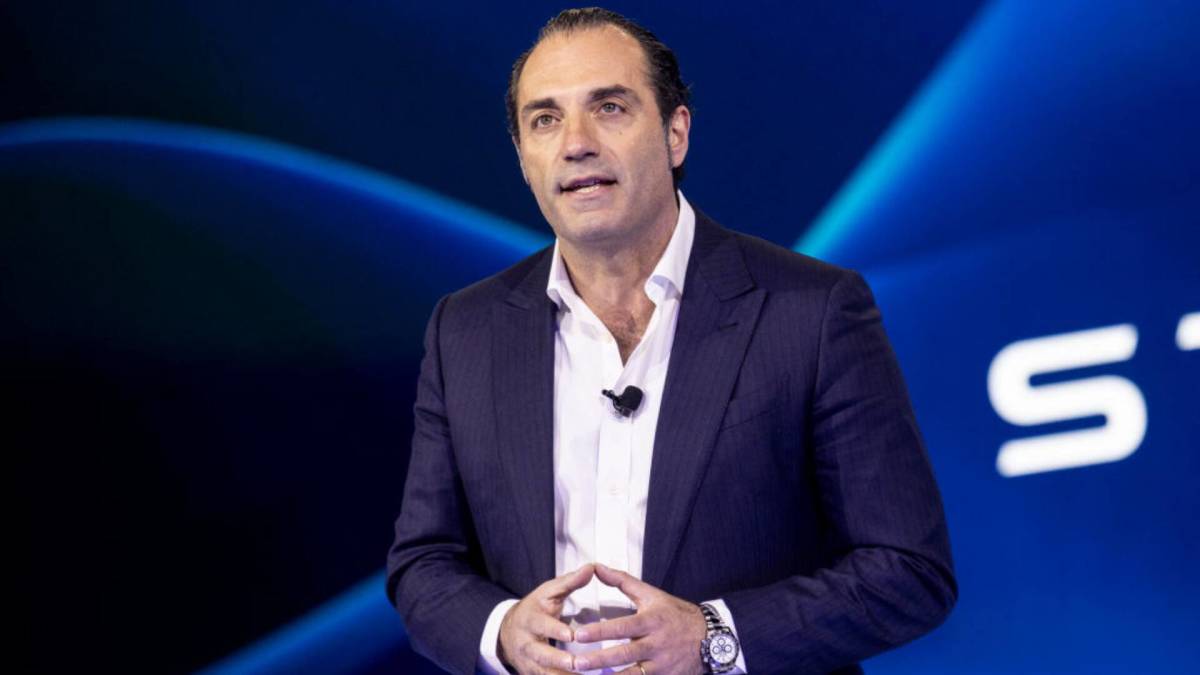This week, multi-national car conglomerate Stellantis STLA was forced to do delay a change in business strategy that the company was hoping would help turn around its fortunes.
The company told stock analysts last Friday that it will delay unveiling its new strategic plan to give CEO Antonio Filosa more time to address the company’s concerns, according ot reports of the call.
“While we had initially indicated Q1 2026, it would now be more accurate to say H1 2026,” Stellantis Global Head of Investor Relations Ed Ditmire said.
The extra time is expected to give the company a better chance to address huge hurdles like U.S. tariffs and regulatory issues in Europe.
The change could slightly complicate other managerial moves the Jeep, Dodge, and Ram parent company just instituted.

Image source: Laurent/AFP via Getty Images
Stellantis has a $1.7 billion issue with tariffs
Stellantis is the most unique of the “Detroit” Big 3.
The company is an amalgamation of French, European, and American brands and the company imports 40% of the vehicles it sells in the U.S., its largest market, from Mexico and Canada which face 25% auto tariffs.
U.S. auto imports by brand:
- General Motors: 750,000
- Stellantis: 564,000
- Ford: 420,000
New CEO Antonio Filosa has to navigate this situation, while switching his company from a Europe-first mindset to a U.S.-based one.
Filosa, 52, is taking over Stellantis amid a $1.7 billion tariff headwind.
Related: Stellantis takes drastic action to right the ship
“With the new automotive sector tariffs now in effect, it will take our collective resilience and discipline to push through this challenging time,” Stellantis CEO Filosa said recently.
Second-quarter shipments fell 6% to 1.4 million vehicles globally. In comparison, North American shipments are expected to decline by 109,000 units (25%) due to reduced manufacturing and shipments of imported cars.
Stellantis shifts focus back to North America
Filosa, who has also kept his title as director of North America, is investing heavily domestically to win back U.S. customers.
Under former CEO Carlos Tavares’ leadership, Stellantis laid off American factory workers, shuffled its C-suite, and forced its U.S. brands to push products that American customers didn’t like.
Related: Tesla trillion-dollar business hits major government speed bump
Filosa, on the other hand, shared that he is moving the CEO’s office to Detroit, Michigan. In May, the company revealed that it will build a $388 million “megahub” in Van Buren Township, just outside of Detroit.
But North America isn’t Stellantis’ only concern. Last week, the company turned his attention to the European market.
Stellantis shuffles its European leadership
Last week Stellantis named Emanuele Cappellano, formerly the company’s head of South American operations, was named head of “Enlarged Europe and European Brands,” replacing Jean-Philippe Imparato.
Imparato will move over to lead Maserati, the brand’s struggling Italian-based marque. But the shuffle does not end there.
Stellantis’ new executive movements
- Emanuele Cappellano: Appointed Head of Enlarged Europe and European Brands, in addition to his current role leading Stellantis Pro One
- Jean-Phillipe Imparato: Head of Maserati
- Herlander Zola: New Head of the South America region, currently Head of Commercial Operations, Brazil and South America Light Vehicles
- Grégoire Olivier: New Head of the China and Asia-Pacific region, former Head of China Strategy
- Ralph Gilles: Joins Stellantis as Global Head of Design
“With these new appointments, we are promoting exceptional talent from inside and out to leadership roles as we prepare our business for future success,” Filosa said.
“We are also sharpening our regional focus by allocating specific responsibility for our Asia-Pacific and Middle East & Africa organizations at the Stellantis leadership level,” he added.
Related: The latest used and new car buying trends you should know about
#Stellantis #forced #delay #major #decision #troubling #reason